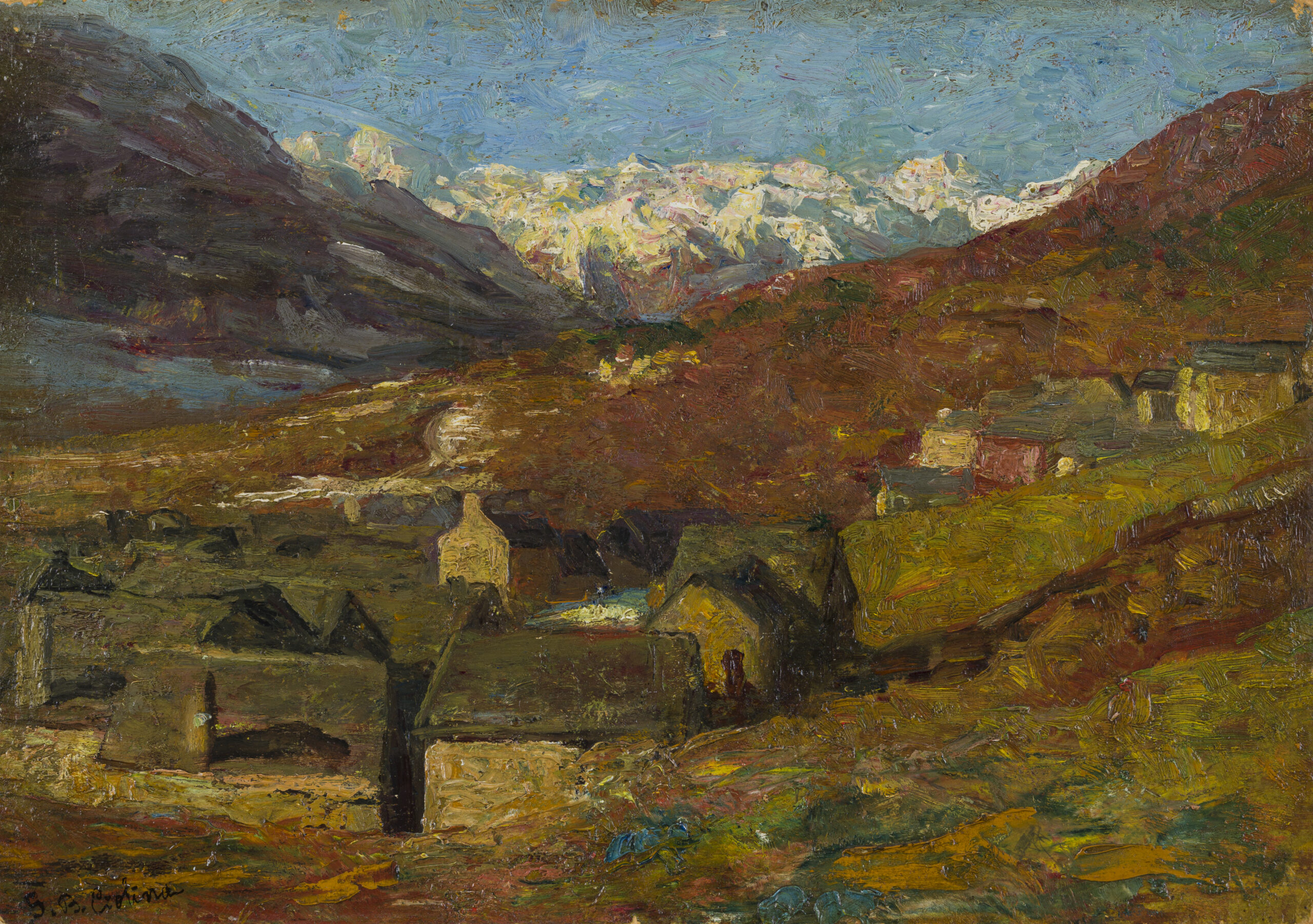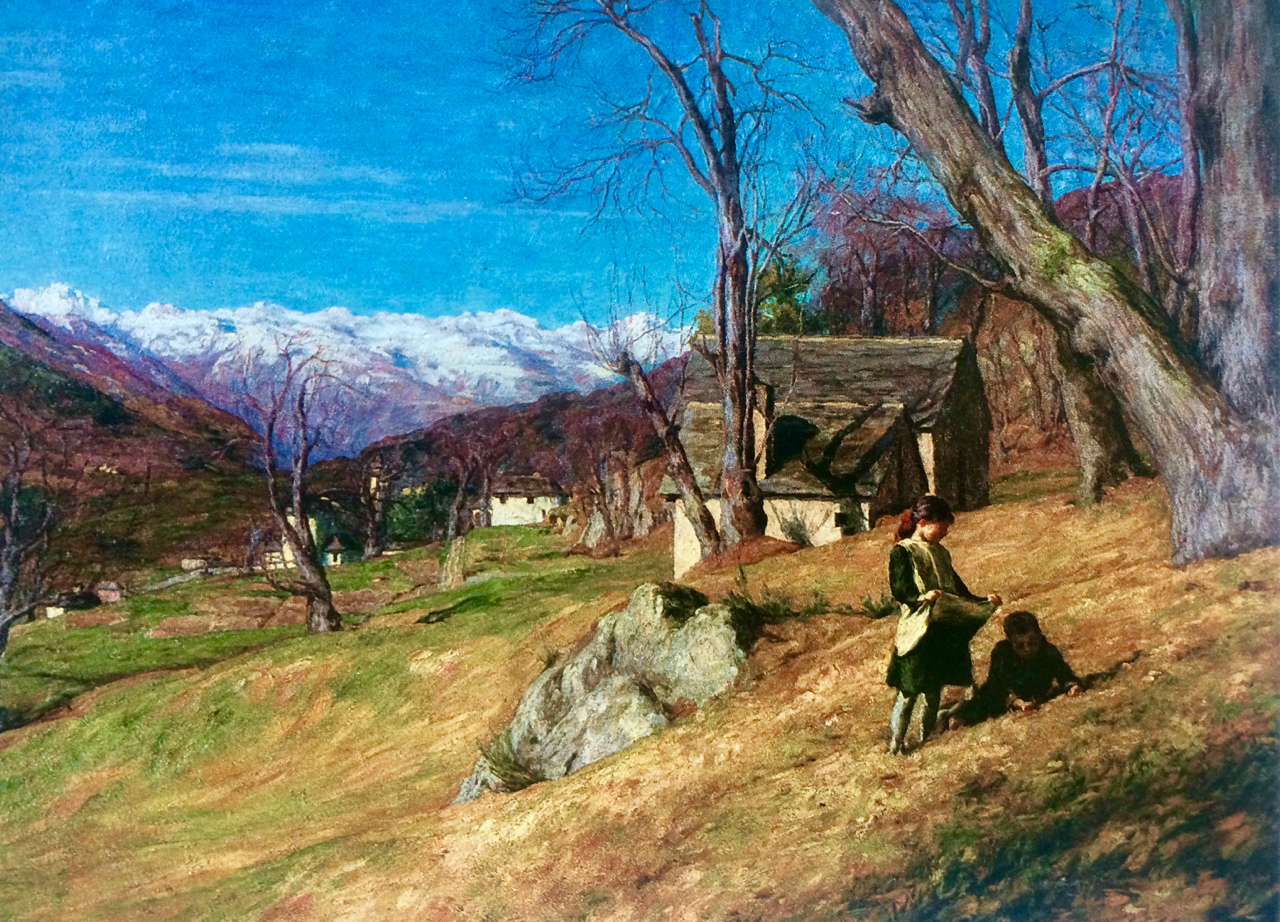The power of luminosity, the sincerity of colour (which can be called life, the whole), the masses and compositions that express the absolute truth with simplicity: in short, life in a single expression, captured intimately with candid truth (…) All art, all sentimental or non-sentimental poetry, is it not intuitively derived from truth? The same thing can be expressed in a thousand ways depending on the characteristics of individuals. (…) Nature itself is always the same; it is not poetic, nor is it sentimental, gloomy, cheerful, or tragic, but rather it is nature, although it can change its appearance infinitely according to human temperament. Consequently, it is difficult to understand the importance or necessity of always living within such narrow ideas and persistently refusing to venture beyond them. This applies not only to painting but to all the fine arts that feel a strong need to be renewed.
January 1897. Giovanni Battista Ciolina’s diaries. Transcribed by Paolo Ciolina


CRITICAL ANALYSIS
There is a very close relationship between Le Alpi Lepontine da Toceno (The Lepontine Alps from Toceno) and Mattino d’inverno (Winter Morning), certainly in terms of composition (which is essentially the same, just slightly set back in Mattino d’inverno), but mostly in the reddish-brown chromatic dominance that characterises both works, a connection that is undoubtedly no coincidence. Due to its smaller size, Le Alpi Lepontine da Toceno appears to be a preparatory study for Mattino d’inverno, which, in contrast is bigger at 126×171 cm. The latter was presented at the EXPO in Milan in 1906, which was organised to celebrate the opening of the Simplon Tunnel. If the hypothesis of this relationship is correct, the two works were most probably produced within a year of each other. If Mattino d’inverno was painted in 1905, the dating of Le Alpi Lepontine to 1894, as attributed by his son Paolo, does not seem plausible. Undoubtedly, the painting technique used in the two works is different, and not necessarily linked to the difference in size. In Le Alpi Lepontine, the brushstrokes are broad and free, constructive and non-descriptive. In contrast, Mattino d’inverno features a more filamented, textured technique, especially in the background mountains, creating an almost blurry effect. Ciolina rarely added dates to his work, which doesn’t help, and neither does his taste for simultaneously experimenting with different, often opposing techniques. As a striking example in this regard, we can compare L’ombrellino rosso (The Red Parasol – tappa 10), which I would date at 1896-97, and Il filo spezzato (The Broken Thread), which are chronologically very close yet technically opposite. Furthermore, very few works prior to his trip to Lyon in 1896 are accurately dated and all can be traced back to 1890. They are characterised by a style influenced by Cavalli and Monticelli. We have no certainty regarding how Ciolina painted in the following five years. It is plausible that even during this period, Enrico Cavalli’s influence was quite present, with the dominant use of the petite tache technique. However, it is surprising to have come across a view of the Convent and Sanctuary of the Sacro Monte Calvario, signed and dated 1894, whose execution style is typical of Federico Ashton (who lived nearby and who I believe Ciolina might have known). This style is completely different from both that of Cavalli and that of the presumed contemporary painting, Le Alpi Lepontine!
What is truly striking in this painting is the freedom in both the application of the painting material, which is genuinely constructive, and in the use of colour. From the smudges of brown at the extreme edge of the sky to the reds and pinks of the snow-capped Lepontine mountains, not to mention the bluish-green hues in the foreground and the shadows of the remaining snow between the mountain huts, it presents a Toceno that has been reinterpreted in a highly non-‘photographic’ way. It is significantly different from the objectivity of the Sacro Monte Calvario and even from the heightened descriptiveness of Mattino d’inverno. And so? Should we consider that Le Alpi Lepontine da Toceno was painted considerably earlier than the large painting exhibited in 1906? Is it likely that an artist like Ciolina, who in the latter part of his life – unlike Fornara – rarely revisited his old subjects, would have done so in this case? For the time being, it is a question to which we cannot give a certain answer.
Bambini che cercano grilli (Children Searching for Crickets) is quite different in technique and in its clear light. According to Aurora Scotti, it can be “confidently dated” at around 1918. The dating of Bambini che cercano grilli is not confirmed by Ciolina, as he only signed the large canvas (87.5×117 cm). However, certain aspects of the painting appear technically close to Mattino d’inverno such as the filamented trunk of the large chestnut tree on the right and the rendering of the barren meadow where the artist depicted his children, although in a slightly more valley-ward setting. In this depiction, the Oratory of Madonna del Sasso and the parish church of San Antonio are clearly recognisable. What is most fascinating about this piece is the extraordinary light achieved through tonal, chromatic contrasts, between the brightly lit foreground meadow and the dark violet hues on the slopes of the lower Vigezzo Valley. As it extends towards the Lepontine mountain range, the darkness gradually gives way to the brilliance of the snow outlined against the deep blue of the sky.
I would lean towards dating this artwork at the early years of the second decade of the 20th century.
Text and image research and adaptation by Chiara Besana.
Critical analysis by Paolo Volorio.
Sign up to receive news on events, exhibitions and trainings from the Rossetti Valentini School of Fine Arts Foundation.
Iscriviti per ricevere le news su eventi, mostre, incontri di formazione organizzati dalla Fondazione Scuola di Belle Arti Rossetti Valentini.